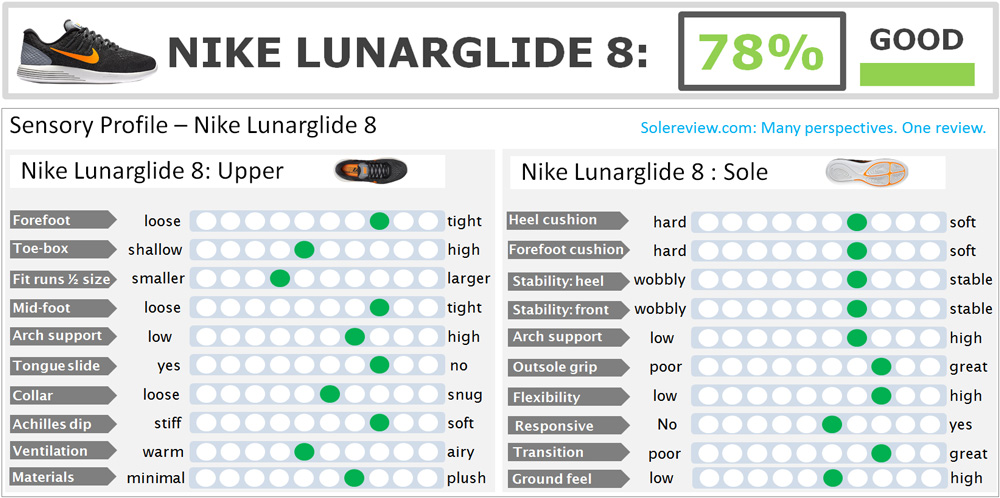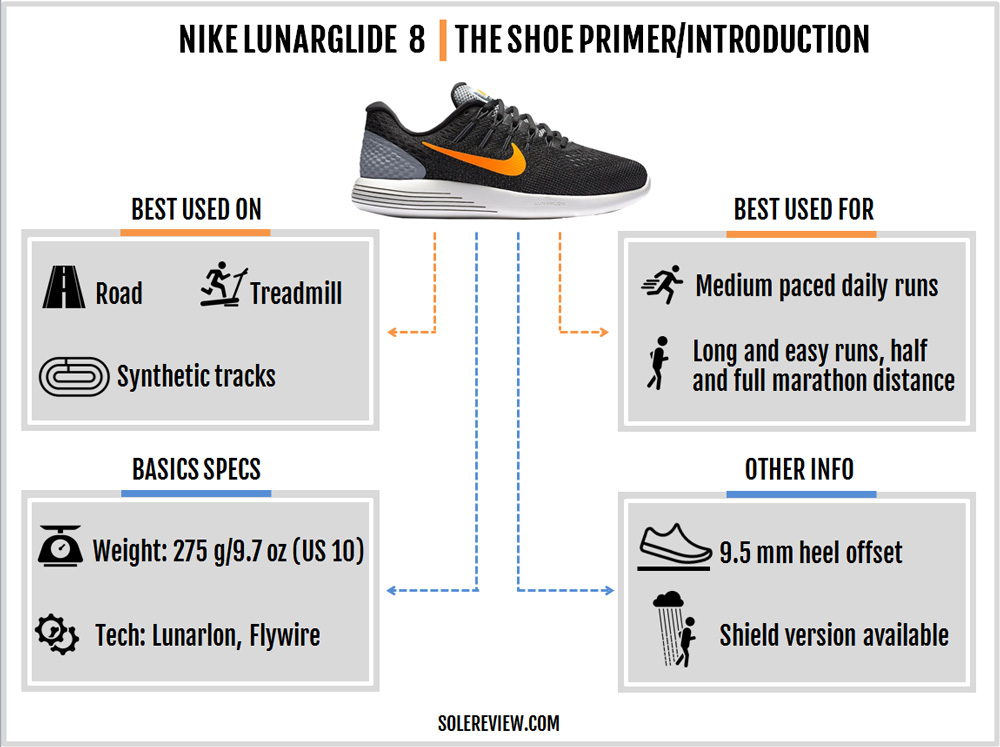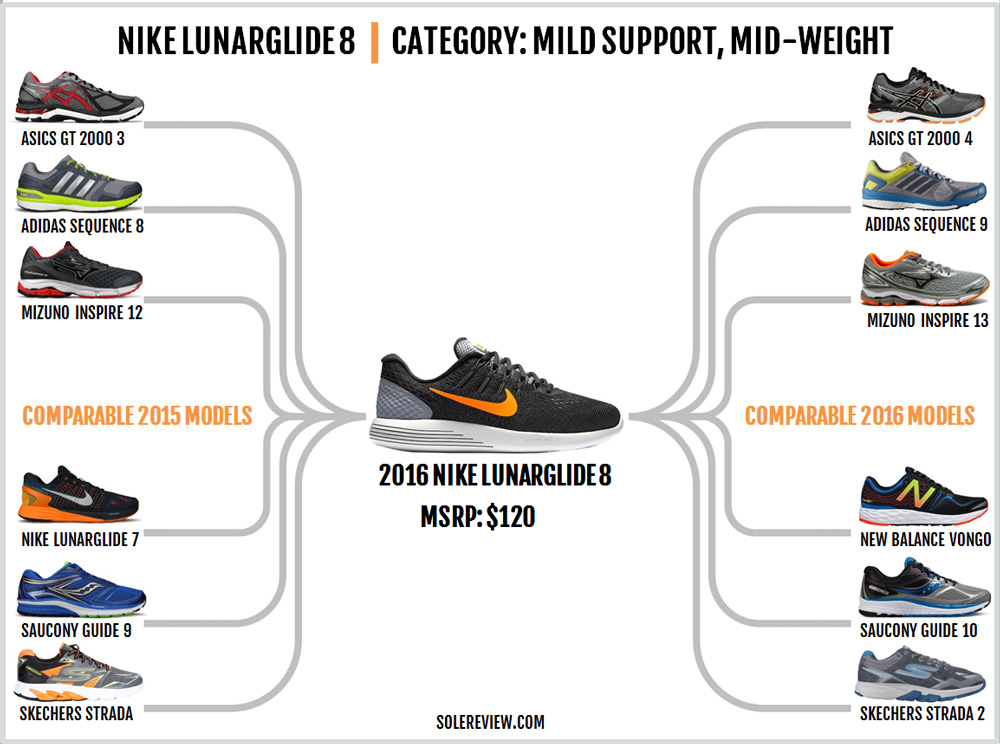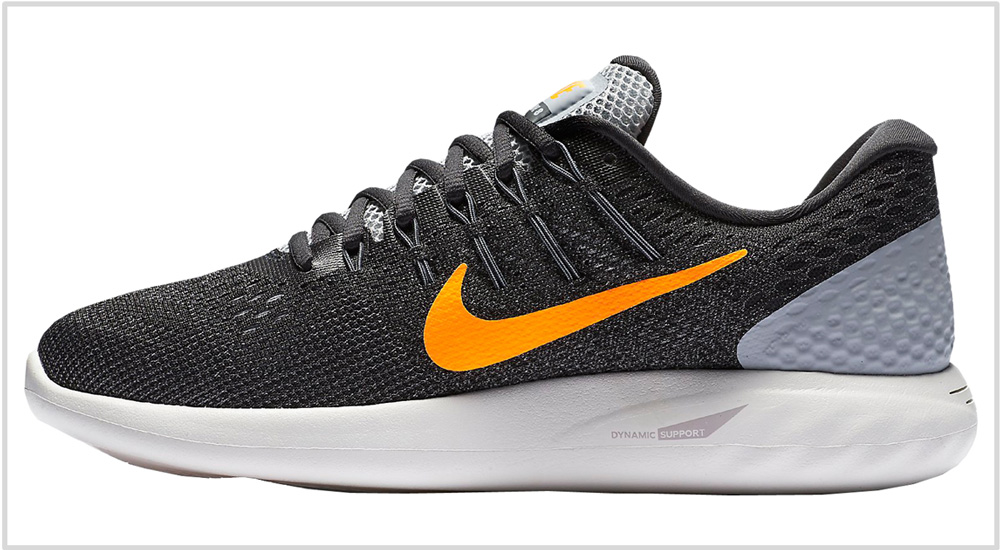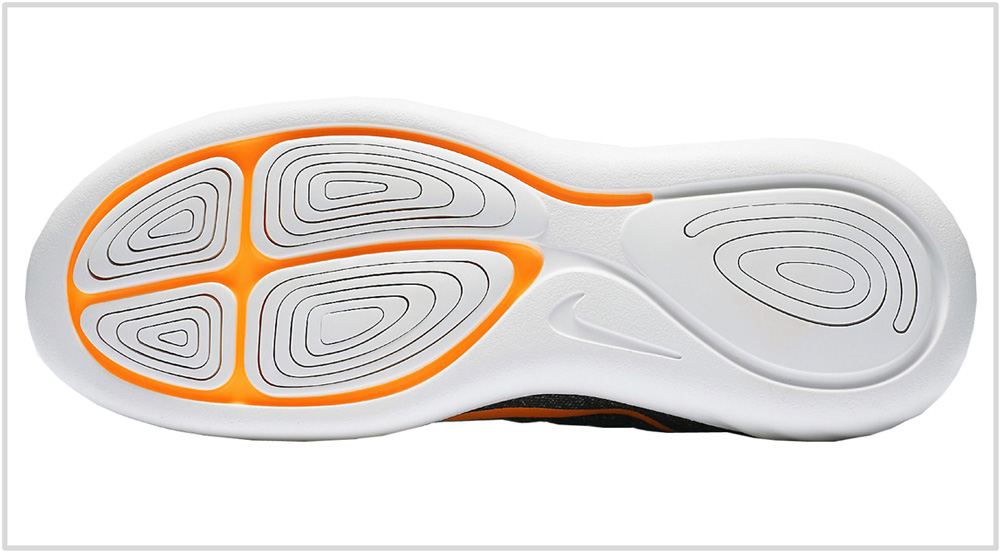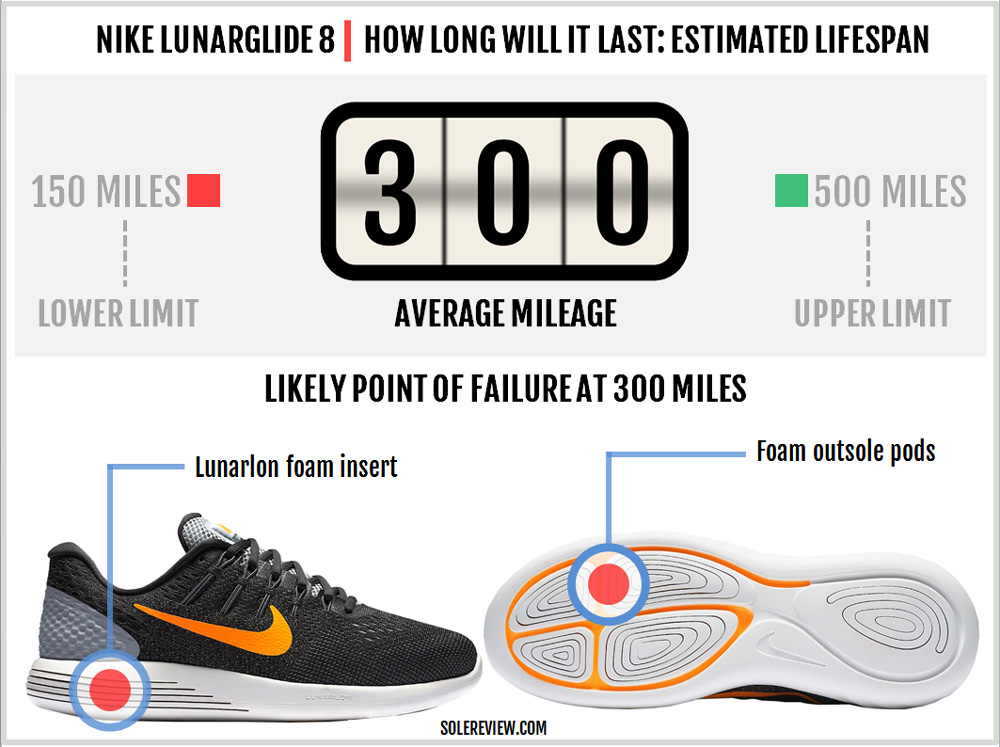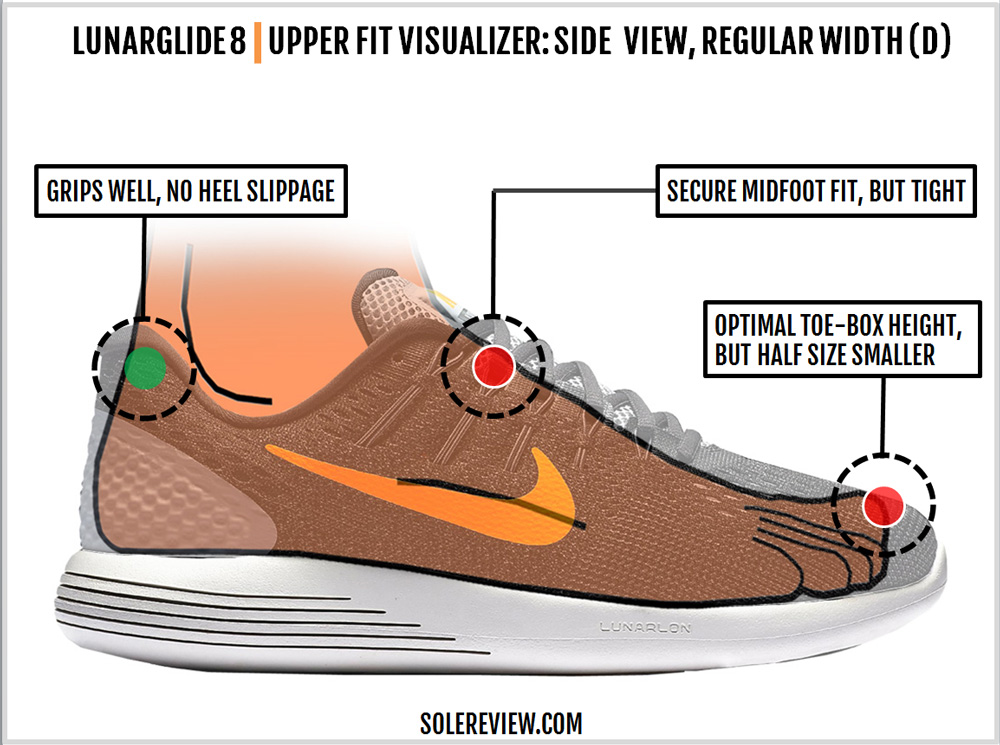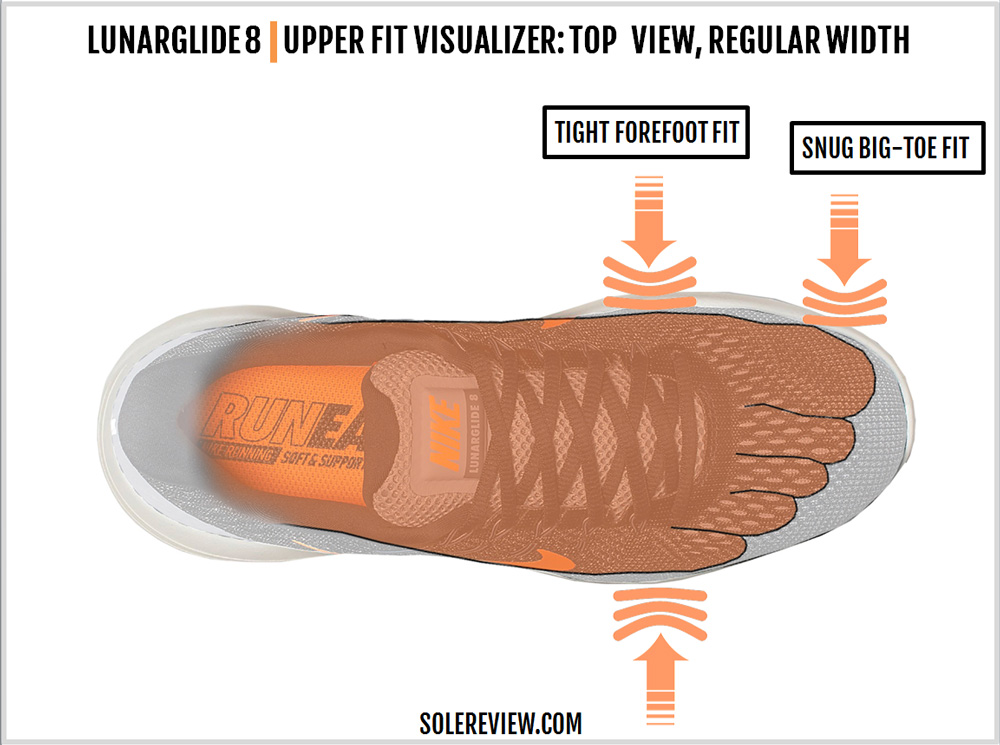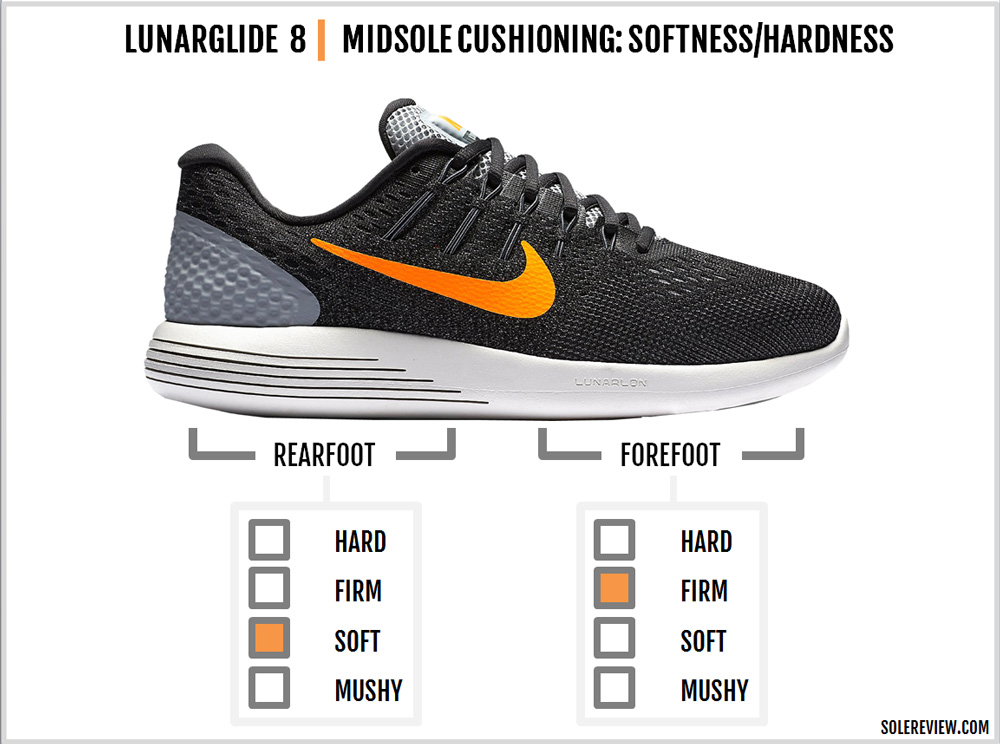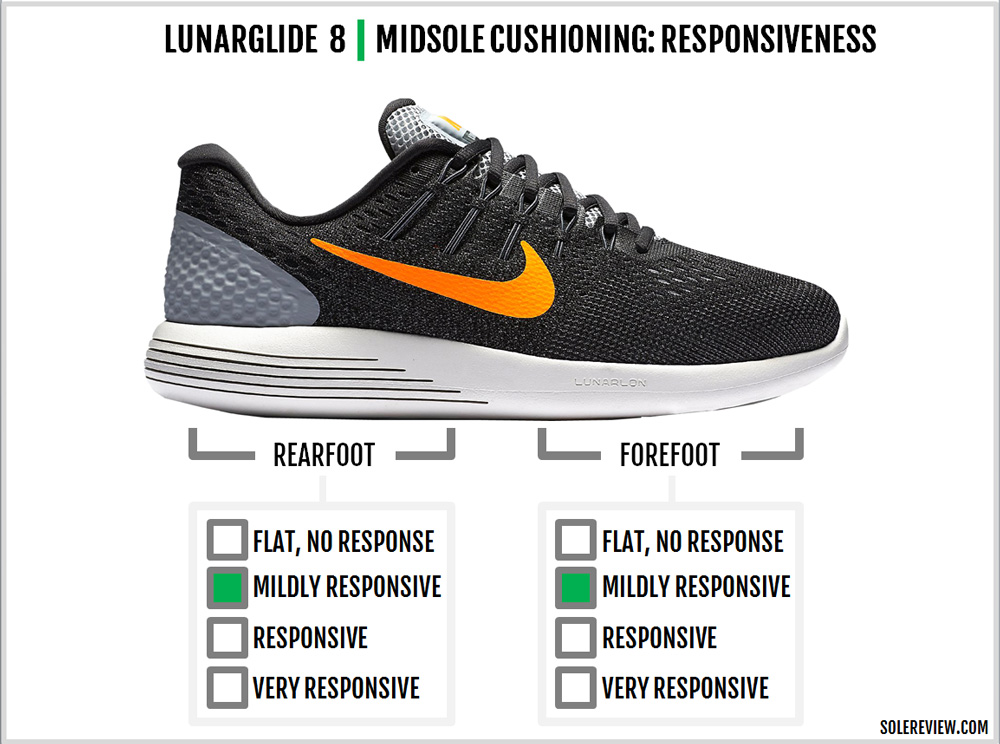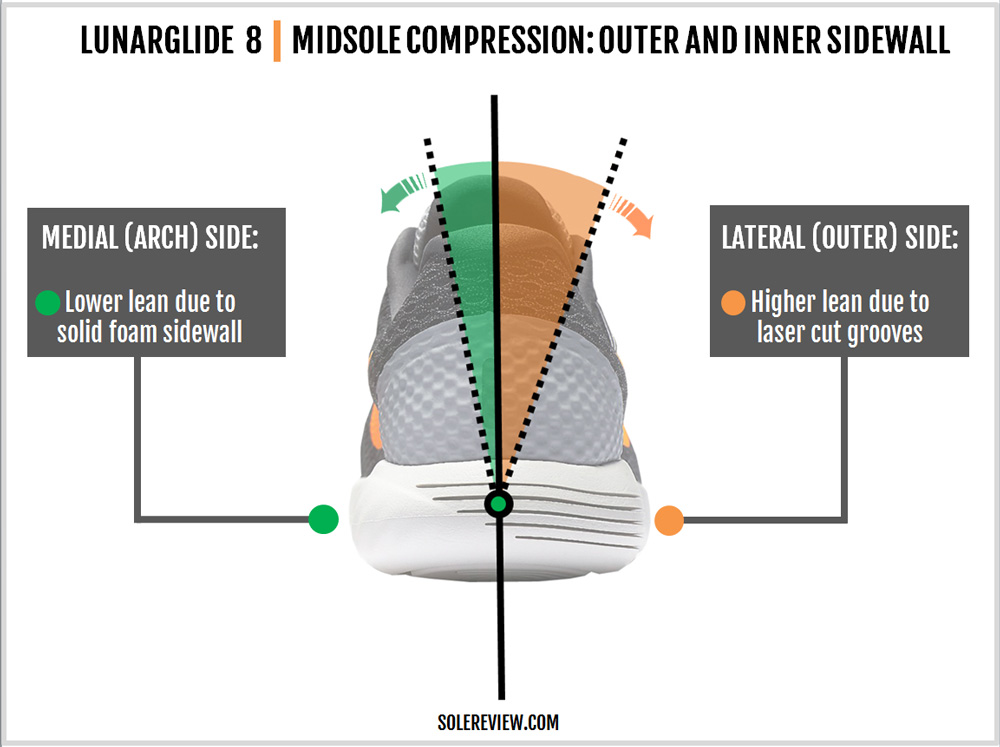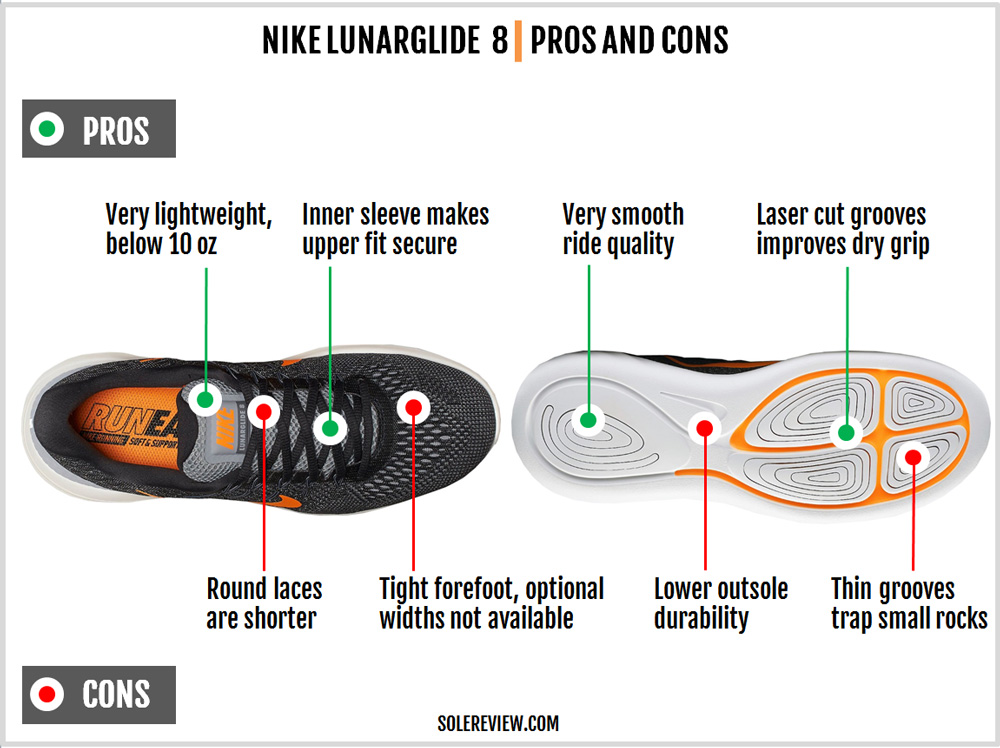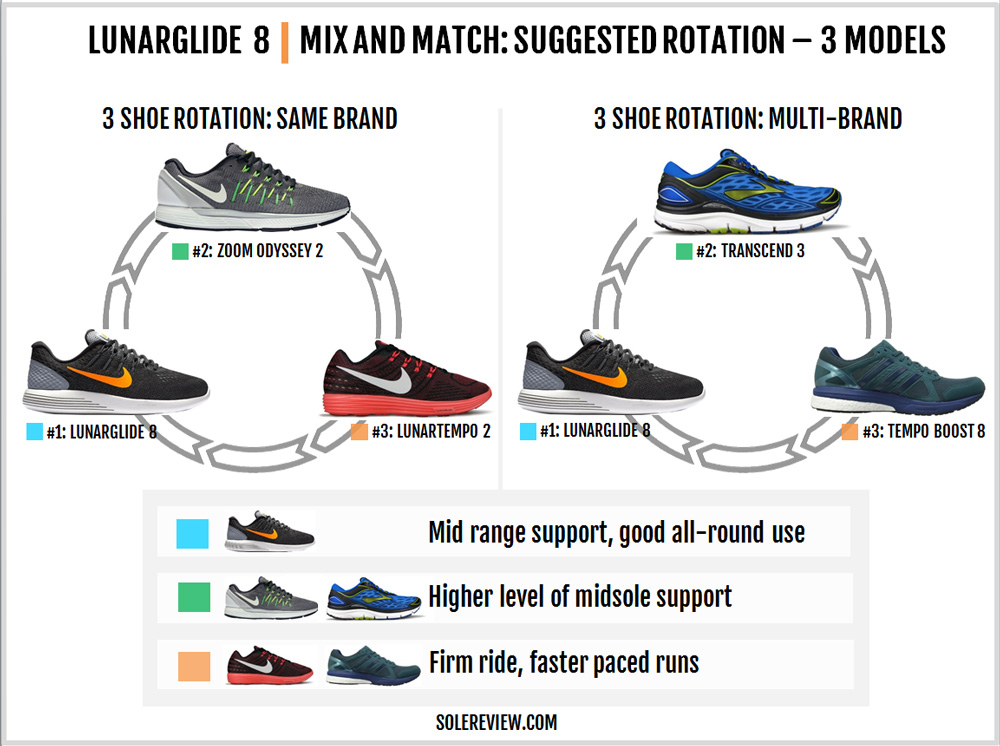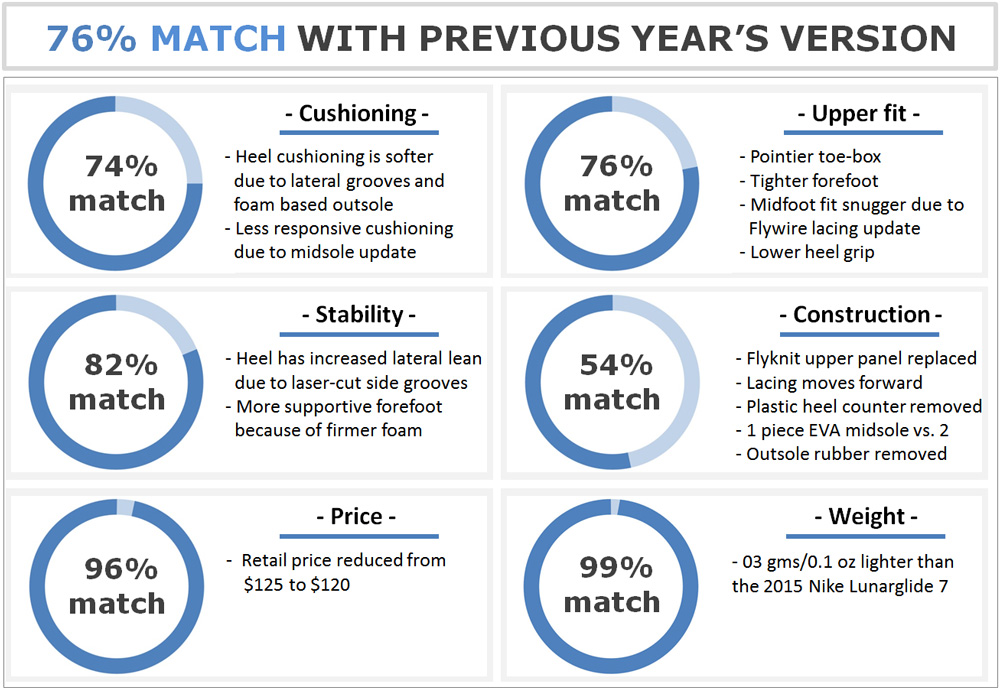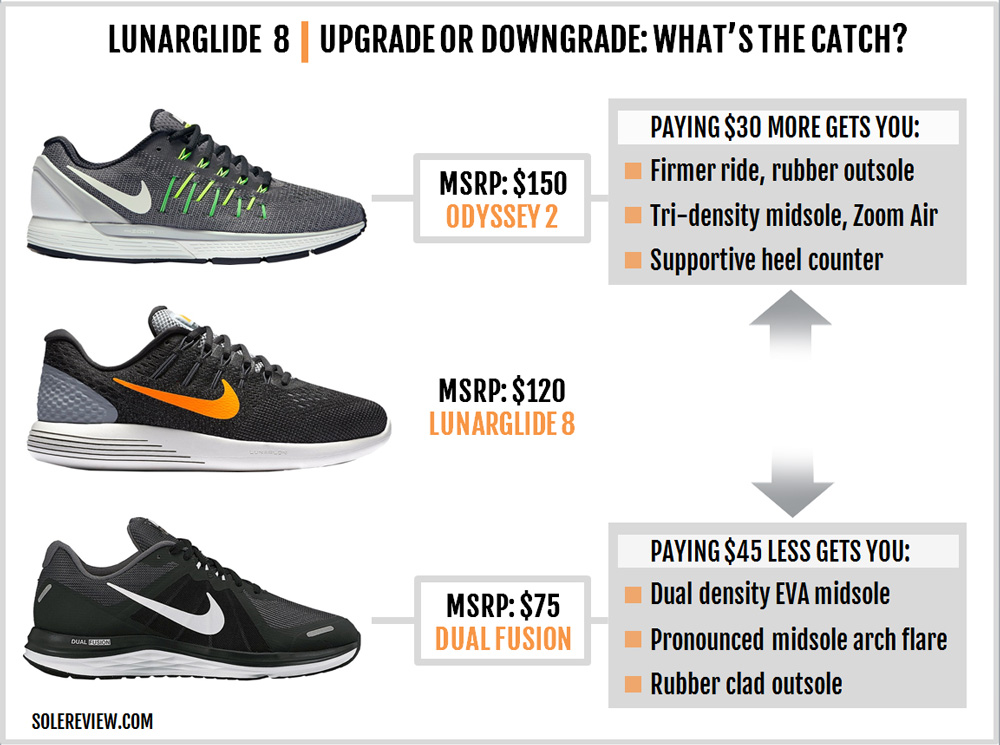INTRODUCTION
While going through our monthly patent trawling ritual, we came across a Lunarglide trivia which most would probably not know. One of the people involved in creation of the original Lunarglide back in 2009 was an fellow shoe (ex) reviewer.
Remember Prof. K of the legendary Kicksology website? After shuttering the way-ahead-of-its-time blog, Prof. K went to work for Nike. The patent mentions him (E.Kim) as one of the inventors of the Lunarglide patent.
Well, the patent doesn’t exactly say Lunarglide, but relates to the shoe’s unique spin on the traditional ‘support’ category by using an angled piece of foam inside the shoe.
Except for versions 4 and 5, the Lunarglide has relied on an internal Lunarlon wedge to make good on its supportive ride promise.
It differs from other medial-posted shoes in this category by using a Lunarlon piece raised higher on the medial (inner) side than lateral. This design claims to control foot-roll, the basic premise of all running shoes which promise a ‘stable’ ride.
The 2016 Nike Lunarglide 8 comes with the original Lunarlon wedge, but apart from that, it is a brand new shoe with an extensive makeover. The upper is new, and so is the midsole and outsole attached underneath.
There used to be a time when the Lunarglide was the only one of its kind in the support category. But today, as much as traditional stability shoes continue to exist, there’s also a wide assortment of shoes interpreting the support category in a contemporary way.
For instance, the adidas Sequence 9, the New Balance Vongo and the Skechers Strada 2 all ditch the old-school medial post. The Sequence uses a firmer medial midsole of a different kind, and the Vongo and Strada both have their individual versions of stability.
Among old timers, the Mizuno Wave Inspire has always eschewed the use of a traditional medial post, relying on a variation of its ‘Wave plate instead.
The Asics GT 2000 4 and Saucony Guide 10 have the instantly recognizable medial post, just in case one craves the traditional stability design.
DESIGN AND MATERIALS
The LG7 used a combination of a Flyknit midfoot panel stitched over an engineered mesh upper. The LG8 replaces that set-up with a single piece of external upper made entirely with engineered mesh instead of Flyknit.
Replacing the Flyknit panel also affects the placement of the Flywire cords. On the LG7, they were integrated into the Flyknit panel. On the LG8, the cords work independent of the upper and connect to the round laces. And just so that you know, the 2015 Lunarglide had flat laces.
The lacing starts at an earlier point over the forefoot than the LG7, and the mesh design over the forefoot has been updated too. The mesh area over the toes evolves to a close-knit design.
The heel design borrows from the more cushioned Lunarepic Flyknit. Nike replaces the Lunarglide’s external plastic counter for the first time since the model’s release. All that external hardness is replaced by an internal counter behind the collar textile and foam padding.
Reflectivity is present in the form of a small strip running vertically over the heel centerline.
The Lunarglide 8’s sole design is vastly different from that of the LG7. While both versions of the Lunarglide have a dual density midsole (EVA with a softer Lunarlon core), the design has been completely reworked.
On the LG7, the soft Lunarlon was exposed under the mid and forefoot, forming a stacked angle with the firmer EVA casing.
On the Lunarglide 8, the entire external midsole is constructed using firm EVA, and Lunarlon is hidden out of sight. Also, the foam lasting under the insole is now fabric based instead of foam – the latter had been the foundation for all previous Lunarglides.
The midsole sidewall under the lateral rearfoot has side compression grooves instead of Lunarglide 7’s solid foam. That design language extends to the outsole, where the LG7 uses deep grooving cut into the foam.
There’s no rubber under the sole; the grooves over the forefoot foam pods act as grip agents. Under the heel, the grooves are cut into only one side of the flat profiled outsole – and that’s the lateral side.
The design is similar to the Lunarepic, save a couple of differences. One, there are a lesser number of groove rings compared to the Lunarepic, and two, the foam is firmer.
Regardless of the difference, the Lunarglide 8 is recommended for clean roads/indoor/track only. Much like the Lunarepic, the LG8’s deep grooves will pick up small rocks and the like during your runs.
So stay away from gravel paths and light trails when you’re running in the Lunarglide 8, and your daily outsole cleaning routine will be less time consuming.
Compared to the previous editions, the Lunarglide 8 has lower durability. The obvious cause is the complete lack of rubber underneath, combined with Nike’s continued use of Lunarlon.
The foam underside will begin to show signs of wear and tear much faster than the previous rubber outsole based Lunarglides. Also, the Lunarlon insert isn’t exactly known for its longevity. Over time, Lunarlon will begin losing its cushioning properties.
Currently, 300 miles is the median lifespan for optimal performance, with the upper limit being 500 miles.
UPPER FIT AND FEEL
In the back, the heel fits well with no complaints. If you’re switching the LG7 with the 8, the only thing you’ll find missing is the tenacious grip of the external heel counter.
The Lunarglide 8 collar grips well, and the foam+fabric lining is comfortable. That said, the heel wraps around the heel with lower intensity than the Lunarglide 7.
If the heel goes the relaxed way, it’s the other way around for the midfoot and forefoot.
The midfoot panel is now part of the engineered mesh upper, and the Flywire cords float independently of the panel (on the Lunarglide 7 they were woven right in). And the round laces (vs. flat) increases top-down pressure.
These factors make the midfoot fit tighter. The Flywire cords exert more side pressure and the integrated upper midfoot wraps around snugger. As the entire forefoot happens to be tighter, some might require going half a size up vs. the LG7.
The toe-box height is slightly lower. The mesh above the toes has a close knit, unlike the relatively open structure of the LG7’s mesh.
In some ways, the Lunarglide 8 has hues of the Lunarglide 6 when it comes to the quality of upper fit.
The lacing begins closer to the front compared to the Lunarglide 7, and there’s a new laminated strip ahead of it. These updates result in a fit quality which is tighter and somewhat stiffer than the Lunarglide 7.
There’s another theory about why the forefoot is narrower.
On the Lunarglide 7, the upper was bonded to soft Lunarlon, which allowed the fit some margin around the edges. In contrast, the Lunarglide’s upper is glued to a firmer EVA casing which restricts stretch of any kind.
RIDE QUALITY AND BEHAVIOR
The Lunarglide 8 runs softer than both the Lunarglide 6 and 7, and that’s thanks to the redesigned midsole and outsole. The lateral slits on the midsole wall increase softness, and so does the lack of outsole rubber. And like the past Lunarglides, the blown foam insole on the top adds the first layer of cushioning.
Under the forefoot, foam pods with concentric grooves deliver a softer ride compared to the Lunarglide 7’s rubber rings.
However, all that increased softness is relative to the LG7. The ride still maintains a tinge of firmness; the fact that the foam lasting has been replaced with a fabric one on the Lunarglide 8 adds to the firmness.
A good way to put this is that the Lunarglide 8’s softness is somewhere between the plush Lunarepic and the firm Lunarglide 7.
So yes, you can call the Lunarglide 8 medium soft – and it isn’t mushy at all.
Mildly responsive would be an appropriate description of how the Lunarglide 8 feels. The ride feels flatter than the Lunarglide 7, and that happens due to a couple of reasons.
The LG8 no longer has a firm outsole base owing to the absence of rubber and addition of soft foam pods. The midsole is also softer due to the new sidewall grooves. Which means that the softness of the Lunarlon foam inside the midsole is a closer match with its surroundings.
When that happens, whatever responsiveness Lunarlon displayed in the (firmer) Lunarglide 7 gets lost in the softer sole of the Lunarglide 8.
Under the heel, the Lunarglide 8 is slightly less supportive than the LG6 and LG7. This is entirely due to the midsole design; the earlier Lunarglide versions used a firmer midsole casing on the outside.
Not so this time. Compared to the medial/inner side, the lateral/outer midsole is easier to compress due to the laser-cut grooves. The outsole is also designed with a lateral bias; only one side of the outsole has grooving.
The result is that while the Lunarglide 8 is by no means unstable, the heel has the tendency to lean outwards more than Lunarglide 7.
The forefoot on the other hand, goes a level up in support. The single density construction means that firmer EVA replaces LG7’s softer (and exposed) Lunarlon forefoot, hence increasing stability in the process. The tight forefoot helps lock down the foot as well.
The transition is very consistent on the Lunarglide 8. Contributing to that is the single density midsole with the Lunarlon insert and a relatively flat outsole design under the heel and forefoot.
The smooth ride comes at a small price, however. The softer nature of the Lunarglide 8 makes it lazier than the LG7. The forefoot is foam instead of hard rubber so the push-offs don’t come as quick as last year.
PROS AND CONS
The Lunarglide has always been a lightweight shoe weighing below 10 ounces, and the LG8 does nothing to upset the track record. There are other areas worthy of praise, like the smooth quality of ride and outsole traction. The LG8 grips well on the road, treadmill, and track.
Not everything on the Lunarglide 8 shines. The new sole feels great to run in, but it has a couple of shortcomings. The thin laser-cut grooves trap a lot of debris, so after each run, you need to spend 5 minutes trying to pick the small rocks out of the outsole.
The all-foam outsole also leads to lower durability, and you’ll start seeing wear and tear in early stages of your ownership experience. The foam outsole also happens to deliver average grip when it comes to smooth surfaces (hard granite flooring for example), wet or dry.
Also, we don’t see optional widths sold on Nike’s website outside of Nike ID. This is a problem because the Lunarglide 8 is a tighter fitting shoe than the 7, and it would help to have optional widths.
The round laces which the Lunarglide 8 uses are shorter than the last year’s flat laces. Not a deal breaker, but leaves scope for an-season improvement. If you find the heel grip of the Lunarglide 8 somewhat lacking and wanted to use the heel-lock lacing (last eyelet), then the shorter lace length is a hindrance.
RECOMMENDED ROTATION
Though you have the option of sticking to the same brand, we recommend that you switch brands for greater variety. By opting for other brands, you’ll get better variety to complement the Lunarglide.
Within the Nike line-up, Lunarglide does not have a more cushioned or lighter version of itself. The closest you’ll get is the Zoom Odyssey with a $30 pricing premium and the Lunartempo as the lighter alternative.
But then, the Odyssey is the quintessential support shoe (triple density, wedge and all) compared to the more subtle Lunarglide. And while the speedier Lunartempo shares a few design elements like the Lunarlon core and Flywire, it isn’t in the same support category as the Lunarglide.
That is why mixing and matching brands is the way to go. At a higher tier, the Brooks Transcend 3 plays the support-neutral card very well. You can also get the adidas Ultra Boost ST instead of the Transcend if you find the Brooks tight fitting.
Unlike Nike, brands such as adidas and New Balance offer lightweight racers with supportive elements mated to the midsole. The adidas Tempo Boost 8 is supportive while being responsive, and the tried and tested NB 1500 V2 is another option to consider.
So unless you’re tied to Nike by way of your varsity or school contract, look outside the brand. Because within Nike’s assortment, the Lunarglide 8 is somewhat of a loner.
SUMMARY
Needless to say, the Lunarglide 8 is a very different shoe than the LG7. While the LG8 retains some of the core design elements – such as the Lunarlon embed and the sleeved upper – a lot has changed in a year.
Key takeaways would be the softer cushioning and the tighter upper. It also helps to be aware of the lower support and durability levels owing to the redesign, and the debris trapping outsole grooves.
Among other things, the MSRP is down by $5, going down from $125 to $120.
Is it worth the switch from the Lunarglide 7? That depends on what you’re looking for. If its the firmer, supportive nature of the past Lunarglides, then the LG8 isn’t the best choice of footwear.
On the other hand, if you wanted your Lunarglide 6 or 7 to be softer and smoother with a snugger fit, then the LG8 it is.
There isn’t a definite upgrade or downgrade path from the Lunarglide. Till a few years ago, the Lunareclipse was the Lunarglide’s bigger brother. But the LE’s gone now, and in its place is the Zoom Odyssey. But then, the Odyssey isn’t a Lunarglide extension but rather a different shoe altogether.
Likewise for the lower level. A baby Lunarglide does not exist, so the closest you can get is the $75 Dual Fusion X 2. It doesn’t have an angled Lunarlon core and uses a dual stack of co-molded EVA foam. The Dual Fusion X2 version uses the same sole unit as the DF3, a shoe which we reviewed.
Watch out for the prominent under-arch midsole bump; not everybody might like it.
There are a couple of other potential candidates below the Lunarglide. The Lunar Skyelux and LunarStelos come with a dual density midsole and somewhat similar aesthetics, so they’re worth a look as well. Haven’t read any reader reviews for these shoes so far, but the Lunarstelos has a design language similar to the Lunarglide.

